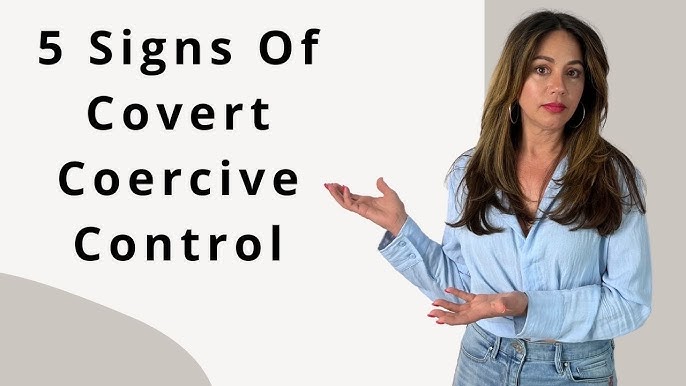Unmasking Coercive Control: 4 Essential Signs to Recognize
Relationships are meant to be a source of support, joy, and mutual respect. Yet, beneath the surface of seemingly normal interactions, a dangerous dynamic known as coercive control can take root. This insidious form of abuse, often more subtle than overt violence, allows one partner to systematically strip another of their autonomy and sense of self. Recognizing the early signs coercive control is paramount for personal safety and well-being. This guide will equip you with the knowledge to identify these critical red flags, understand their impact, and navigate the path towards safety and recovery.
What is Coercive Control and Why Does it Matter?
Coercive control is a pattern of behavior where one person in a relationship uses tactics like manipulation, intimidation, and various forms of emotional and psychological abuse to gain power and exert dominance over their partner. Unlike isolated incidents of conflict, it's a calculated strategy designed to control the victim's thoughts, emotions, and actions, making them entirely dependent on the abuser. This form of abuse is a serious threat to mental and physical health, often escalating over time.
Understanding coercive control is vital because it challenges our traditional perceptions of domestic abuse, which often focus solely on physical violence. As Stanford researchers highlight in their recent studies, the psychological scars of coercive control can be as profound and lasting as physical injuries, if not more so. It affects individuals across all demographics, genders, and sexual orientations, making awareness a universal necessity for fostering healthy relationships in 2025 and beyond. This crucial step towards unmasking coercive control can empower individuals to seek help earlier.
4 Essential Signs of Coercive Control
Identifying coercive control requires vigilance, as its tactics are often disguised as care, concern, or even love. Here are four crucial indicators that signal the presence of this harmful pattern, aiding in unmasking coercive control early on:
1. Calculated Isolation
Explanation: A primary tactic in coercive control involves systematically cutting off the victim from their support network. This makes the victim increasingly reliant on the abuser, diminishing their ability to seek help or gain perspective from loved ones. The abuser may monitor communications, disparage friends or family, or create scenarios that make it difficult for the victim to maintain external relationships.
Example: Your partner insists on accompanying you to every social gathering, making subtle negative comments about your friends afterward until you stop wanting to see them. They might also demand access to your phone or social media, questioning every interaction, or actively sabotage your plans with others by feigning illness or creating an argument.
Tip:Maintain independent connections. Make a conscious effort to regularly connect with trusted friends and family, even if it's just a brief call or text. Strong external relationships are a powerful buffer against isolation.
2. Persistent Threats and Intimidation
Explanation: Abusers use threats, both explicit and implicit, to instill fear and prevent the victim from challenging their authority or leaving the relationship. These threats aren't always physical; they can involve emotional harm, financial ruin, or even threats against pets or children. The goal is to create a constant state of anxiety, ensuring compliance.
Example: Your partner threatens to reveal embarrassing secrets about you if you don't comply with their demands, or subtly implies that something bad might happen to your family if you leave. They might also use aggressive body language, shouting, or throwing objects (without hitting you) to create an intimidating atmosphere.
Tip:Document incidents. Keeping a discreet, private record of threatening behaviors and statements can be crucial for understanding the pattern and seeking help. This record can be a lifeline for unmasking coercive control.
3. Manipulative Gaslighting
Explanation: Gaslighting is a psychological manipulation tactic where the abuser makes the victim doubt their own memory, perceptions, and sanity. By consistently denying events, distorting facts, or claiming the victim is "crazy" or "too sensitive," the abuser erodes the victim's self-trust and reinforces their dependence on the abuser's version of reality.
Example: You recall a specific argument, but your partner insists it never happened, or that you imagined it, making you question your own memory. They might say, "You're overreacting, that's not what I said," or "You're always so dramatic, no one else sees it that way," even when your perception is accurate. This is a classic indicator of the signs coercive control exhibits.
Tip:Trust your gut. If something feels off, or you constantly find yourself questioning your reality, it's a significant warning sign. Confide in a trusted friend or therapist who can offer an objective perspective.
4. Restrictive Economic Control
Explanation: Financial abuse is a powerful tool in coercive control, designed to make the victim financially dependent and unable to leave the relationship. This can involve limiting access to money, controlling spending, sabotaging employment, or accumulating debt in the victim's name. The abuser ensures the victim lacks the resources to escape.
Example: Your partner insists on controlling all bank accounts, giving you a strict allowance, or sabotages your job interviews by creating arguments right before you leave. They might also demand you quit your job, claiming they want to "take care of you," but in reality, they're eliminating your financial independence.
Tip:Maintain financial independence where possible. Even small, separate savings or a secret emergency fund can provide a crucial pathway to safety. Seek advice from financial counselors if you suspect economic control, as this is one of the key signs coercive control is present.
People Also Ask
How Does Coercive Control Affect Victims?
The impact of coercive control is devastating and far-reaching. Victims often experience severe emotional trauma, including anxiety, depression, and post-traumatic stress disorder. They may suffer from chronic stress-related health issues like digestive problems and headaches (Harvard, 2024). Crucially, coercive control erodes a victim's sense of self-worth and personal power, leaving them feeling trapped and disempowered. This trauma can also significantly hinder their ability to trust and form healthy relationships in the future, making unmasking coercive control vital for long-term well-being.
What Support is Available for Coercive Control Victims?
If you or someone you know is experiencing coercive control, help is readily available. Connecting with trained professionals can provide essential information, emotional support, and guidance on safety planning. Organizations like the National Domestic Violence Hotline offer confidential assistance 24/7 via phone or online chat. Reaching out to trusted friends and family can also provide vital emotional support and practical assistance in planning an exit. Remember, your situation is serious, and you deserve support.
Can Coercive Control Be Prevented?
Preventing coercive control involves proactive education and strong boundary setting. Educate yourself on the warning signs coercive control presents, including subtle shifts like intense involvement, unexplained jealousy, and pressure for early commitment. Observe how potential partners treat others; consistent disrespect or controlling behavior towards friends, family, or service staff is a significant red flag. Set and respect clear boundaries in all relationships, communicating them openly and firmly. Finally, resist the urge to rush into relationships, taking time to truly know a person and observe their behavior under various circumstances. Slow, deliberate connection allows you to identify potential issues before deep emotional investment occurs.
Quick Implementation Guide: Acting on Awareness
- Acknowledge and Validate: If you recognize these signs coercive control, validate your feelings. Your perceptions are real.
- Seek External Perspective: Confide in a trusted friend, family member, or mental health professional. An outside view can confirm your observations.
- Prioritize Safety Planning: If you're considering leaving, discreetly plan for your safety, finances, and housing.
- Document Everything: Keep a hidden journal, email, or digital file of incidents, texts, and dates. This can be crucial for legal or support purposes.
- Access Professional Support: Contact a domestic violence hotline or therapist specializing in abuse for expert guidance and resources.
Common Pitfalls to Avoid
- Minimizing the Abuse: Dismissing subtle controlling behaviors as "just how they are" or "love" can prevent you from recognizing the gravity of the situation.
- Blaming Yourself: Abusers are skilled at shifting blame. Remember, the abuse is never your fault.
- Confronting Alone: Directly confronting an abuser without a safety plan can escalate the situation.
- Isolating Yourself Further: Resisting the abuser's attempts to isolate you is critical. Maintain connections.
- Ignoring Red Flags: Early warning signs are precisely that—warnings. Don't rationalize them away.
Next Steps: Towards Healing and Freedom
Recognizing the signs coercive control is the first, brave step towards reclaiming your life. Whether you are actively experiencing this abuse or aiming to prevent it in future relationships, remember that support and resources are available. Your journey to healing and freedom is possible. Connect with professionals, lean on your support network, and know that you deserve a relationship built on equality, respect, and genuine care. Remember, you are not alone.
If you or a loved one are experiencing domestic violence, contact the National Domestic Violence Hotline at 1-800-799-SAFE (7233) for confidential assistance from trained advocates.





